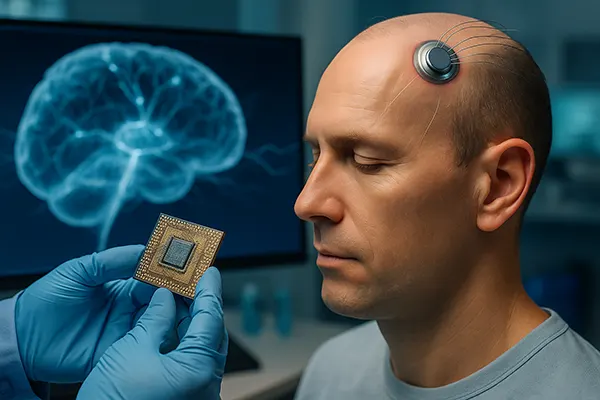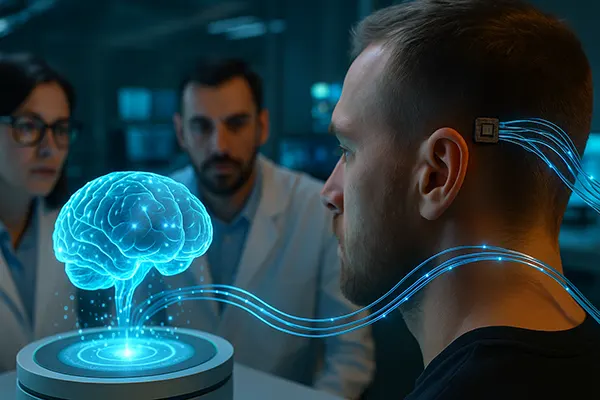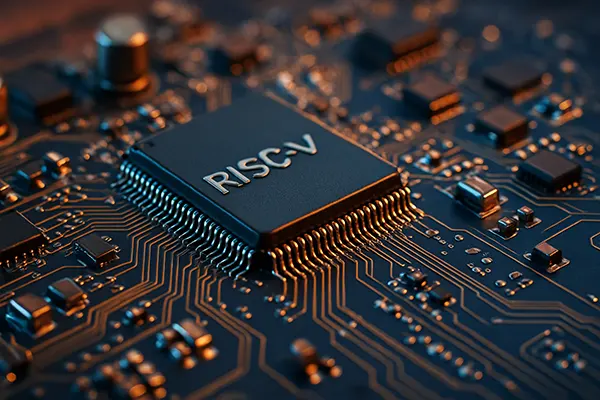Neurochips and the Merger of the Brain with Computers: From Neuralink to Synchron

The integration of the human brain with machines has transitioned from science fiction to scientific reality. In recent years, companies such as Neuralink, Synchron, and other pioneers have been developing neurochips that directly connect neurons to digital systems. These technologies promise to revolutionise medicine, communication, and human cognition, yet they also raise complex ethical and safety questions that humanity must address before the era of full human-machine fusion begins.
The Rise of Brain-Computer Interfaces
The first experiments in brain-computer communication began decades ago, but the 2020s have seen unprecedented progress. Companies like Neuralink, founded by Elon Musk, and Synchron have achieved clinical-grade precision in reading and transmitting neural signals. The main goal of these systems is to restore lost functions — for example, allowing paralysed patients to control robotic limbs or computers directly with their thoughts.
In 2024, Neuralink conducted its first human trial, successfully implanting a chip that enabled a patient with quadriplegia to move a cursor using only brain activity. Meanwhile, Synchron focused on a less invasive technique using stent-based electrodes inserted through the blood vessels. This method dramatically reduces surgical risk and recovery time while maintaining stable neural signal quality.
Both companies operate under strict medical regulation and are cooperating with health authorities in the United States and Australia. Their results mark the beginning of a new medical field — neuroprosthetics integrated with artificial intelligence, capable of translating brain signals into precise computer commands.
Technological Principles and Methods
The core of any brain-computer interface lies in decoding the electrical impulses produced by neurons. Modern neurochips use arrays of microelectrodes that record these signals and transmit them to external processors. Advanced algorithms based on deep learning interpret the data in real time, converting brain patterns into actions such as moving a cursor, typing text, or controlling robotic devices.
Neuralink’s N1 chip, for example, contains over a thousand electrodes capable of capturing extremely detailed neural activity. The system uses ultra-thin polymer threads less than a human hair’s width to ensure minimal damage to brain tissue. Synchron’s Stentrode, by contrast, avoids direct brain penetration entirely, relying on vascular implantation for a safer and faster procedure.
Despite differences in approach, both companies share the same goal — seamless communication between biological and digital systems. Their work could eventually pave the way for new therapies for Alzheimer’s, Parkinson’s disease, and severe spinal cord injuries.
From Medical Use to Cognitive Enhancement
At first, brain-computer interfaces were designed exclusively for medical purposes, but researchers are already exploring their potential for cognitive enhancement. By linking the human mind with external processors, these technologies could theoretically expand memory, accelerate learning, and enable direct data transfer between individuals.
In the long term, such innovations could redefine the limits of human intelligence. Imagine being able to access the internet directly through thought or instantly communicate complex ideas without speech. While this vision remains experimental, the foundations being built by Neuralink and Synchron make it increasingly plausible.
However, experts warn that the line between therapy and enhancement must be regulated carefully. Without ethical boundaries, society risks creating a technological divide between enhanced and non-enhanced humans, potentially deepening inequality and raising moral dilemmas about human identity.
Ethical and Legal Challenges
The fusion of the brain with computers brings not only benefits but also significant risks. Data privacy is a major concern: neural information is the most intimate form of personal data imaginable. Governments and researchers must establish strict safeguards to prevent misuse or unauthorised access to brain data.
Another ethical challenge involves autonomy and consent. Once a person’s neural data can be read or even modified, questions arise about free will and control over one’s thoughts. Legal systems worldwide have only begun to address the concept of “neurorights,” which protect mental privacy and individual agency in the digital age.
Finally, safety remains paramount. Implantable neurochips must undergo years of clinical testing before being approved for widespread use. Long-term effects on brain tissue, immune response, and potential device failure are areas of ongoing investigation, ensuring that progress does not compromise human health.

The Future of Human-Machine Integration
By 2025, brain-computer interfaces are moving from experimental labs into early commercial and clinical applications. Hospitals in the United States and Europe are beginning pilot programmes to test neurochip-based rehabilitation systems. At the same time, major technology firms are investing in software ecosystems that will allow developers to create applications for neural devices.
In the next decade, experts expect a convergence between neurochips, artificial intelligence, and cloud computing. This integration could enable distributed cognitive networks, where human brains and digital systems cooperate in real time to solve complex problems. The potential impact on science, communication, and education could be revolutionary.
Nevertheless, scientists urge caution. Humanity must approach this transition with responsibility, ensuring that technology serves people rather than controlling them. The merger of the brain and computer represents one of the most profound shifts in human history — a step that will test not only our scientific capabilities but also our ethics and collective wisdom.
Global Collaboration and Regulation
International cooperation will play a decisive role in shaping the neurotechnology era. Organisations such as the World Health Organization (WHO) and the OECD are developing frameworks for ethical neurotechnology use, focusing on safety, transparency, and equitable access. Countries like the United States, Japan, and the European Union are already establishing regulatory standards for neuro-device trials and data handling.
Cross-disciplinary collaboration between neuroscientists, engineers, ethicists, and policymakers will be essential to guide innovation responsibly. The goal is to balance technological freedom with moral accountability, ensuring that neurochips become a force for inclusion rather than division.
Ultimately, the journey from Neuralink to Synchron symbolises more than just technological evolution — it marks the beginning of a new dialogue about what it means to be human in the age of intelligent machines.





